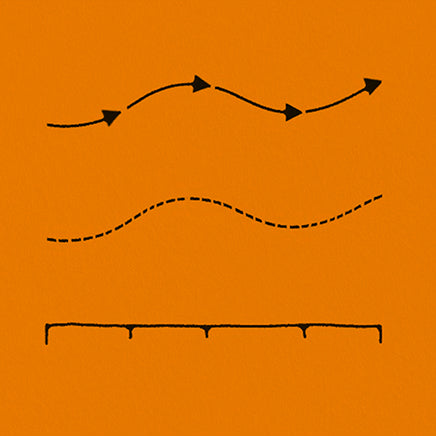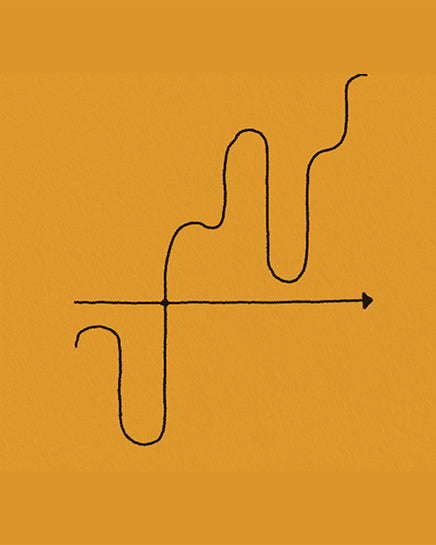
August 03, 2020
Trauma 101: Written Exposure & Its Potential
By the Therapy Notebooks Team
WHAT IS TRAUMA?
Though many of us may live without a formal PTSD diagnosis, we experience trauma. Trauma includes an emotionally intense experience that alters how we interact with the world. Trauma may coincide with clinical anxiety, depression, or another mental illness. The common theme is noticing how your brain and body respond to threats. The answer to this can be profound. Even more, accepting the presence of trauma and putting words to the experience can be difficult.
Clinicians and scientists have covered the chain of events that occur in our thoughts and cells after a traumatic event. This link heightens our awareness and puts us on guard. The stress responses are automatic, unconscious, and often unchecked. We may find our memories are not cohesive.
THE ORIGINS OF WRITTEN EXPOSURE THERAPY
In the 2000s, psychologists Denise Sloan and Brian Marx sought a structured healing approach designed to be simple, cost-effective, and timely. This treatment is called Written Exposure Therapy (WET) [1] . WET is considered an evidence-based, first-line treatment option for managing symptoms of trauma and PTSD [2] [3]. This can be done independently or with a clinician. Our product, The After-Trauma Notebook, is grounded in WET.
The treatment’s efficacy and ease of use have been supported by the United States Department of Veteran Affairs and Department of Defense. WET emerged out of the work and benefits of exposure therapy, narrative exposure therapy, expressive writing, and a fear extinction/emotional processing treatment model [4] [5] [6] . These methods remind us that journaling can be therapeutic. Our brains and bodies learn to react differently to pain. At the same time, we know that getting started can appear daunting.
One aim of WET is to identify, confront, and return to a painful experience over the course of five sessions [7] . Another aim is to focus on your experience when writing about the target memory. Ultimately, you work towards developing a narrative around what happened. You also develop a new or different relationship with your pain.
THE PROCESS & POTENTIAL OF WET
Overview
The first session lasts an hour. Subsequent sessions last around 40 minutes each. In the first session, your therapist explains the meaning of PTSD. They’ll focus on the importance of writing in reducing symptoms [8]. Then, your therapist provides specific guidance on the writing exercise.
You will choose a single traumatic memory. It’s important that this event is vivid, stressful, and specific. In the moment, you will focus on the aspects and associations that arise. Keep fixating on what comes up for you and welcome all feelings. For 30 minutes, you will include as many details as you can remember. Start at the most activating moment. End when you sensed safety. The goal is to stay in the act of writing for as long as you can. Afterward, you will share your reaction to the entire process with your therapist. This may include naming distressing sensations or thoughts. This can also dictate the course of future sessions.
The remaining sessions return to the target memory alongside therapist check-ins. And there are no take-home assignments.
General preparation, set, and setting example
Schedule 45 minutes per week to complete a session. You will decide on a comfortable environment that is safe, secure, and free of distractions. Settle into the space. Note how you’re feeling.
Sessions and transitions
Set a timer for 30 minutes. Write for the entire time. Use the past tense. Include as much clarity and detail as you can.
We understand that visiting a painful event can prompt serious overwhelm. The After-Trauma Notebook features frequently asked questions and distress tolerance strategies to support you along the way. One technique to consider while writing and responding to content is urge surfing.
PACE YOURSELF
It’s important to remember that confronting trauma requires courage and patience. Our lead clinicians remind us to be courageous and gentle with ourselves when working with trauma. Engaging in WET is an ongoing commitment to face and recall what may be tempting to avoid and suppress. You will want to gradually expose yourself to the details of the event. It’s okay if you do not recall the entire event in one session. As you progress, you will expand and make meaning of the trauma. You will also work through the fear or threat response.
It’s understandable that additional distressing memories may come up for you. It may also be difficult to decide between target memories. Make note of this. This will be useful information when deciding on a target memory for another set of WET sessions.
Consider these steps if you decide to work with a clinician. Learn more about trauma here.
Free download or worksheet
Questions?
Our experts are here to help. Submit your questions to askanexpert@therapynotebooks.com and we’ll do our best to answer them.
This article is not therapy or a replacement for therapy with a licensed professional. It is designed to provide information in regard to the subject matter covered. It is not engaged in rendering psychological, financial, legal, or other professional services. If expert assistance or counseling is needed, seek the services of a competent professional.



